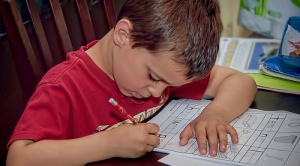Caelie_Frampton via Compfight cc
There are many teachers who make excuses about why they don’t teach treaty education. I don’t have time. There are no Aboriginal students in my class. I don’t know anything about treaties. I don’t want to offend. The list goes on and on.
This is perhaps why some students do not take topics such as treaty education seriously. They sense that their teacher does not think the topic is meaningful and so they choose not to engage in the material. In addition, some teachers may not choose to teach treaty ed. at all and this, again, is an indicator to students that such a subject is not important. This, in combination with media and news perpetuating stereotypes against Aboriginals, makes it no wonder why the cycle of racism seems to be an unending one. Indeed, from Claire Kreuger’s presentation in ECS 210 yesterday (check her out on Twitter), she talked about a article that CBC news posted in the last couple of years. The article polled people about whether they would date someone of Aboriginal descent and a startling 50% of those stated “no”. Upon searching for the link to this article, I found that I could not find it and I hope that the outcry of people about the racism inherent in such an article forced CBC to pull it down. Yet, CBC writes what the people are interested in and that they would feel that such an article would pique people’s interest is disturbing in itself. After talking about this article, Claire asked the class to think about what Aboriginal adolescents would feel upon seeing such an article. If that was me, I cannot even describe in words what I would feel – the alienation, the anger, the hopelessness…it would be overwhelming. Yet, this is the reality that many Aboriginal adolescents face. It is one that no human being should ever have to endure.
Every student deserves to feel like he or she belongs is school; every student should feel welcomed. I would argue that, even in the most multi-cultural school, there is evidence of white privilege. It is shown through the smiling white men and women on posters across the school, the existence of only white staff members, the curriculum which has traditionally furthered white ways of knowing, and even school being organized around the Christian calendar; it is everywhere. From this evidence, it seems that achieving a truly multi-cultural school could be an insurmountable task. However, we are making gains; although our school system is not perfect, this progress is important – we are trying. Yet, by some teachers completely dismissing the idea of treaty education – and schools not holding them accountable for that – this progress is being severely inhibited. By failing to recognize the existence of treaties, teachers are furthering to perpetuate white privilege – the phrase “We owe them nothing – comes to mind. Indeed, there needs to be a major change in how teachers view treaty education in order for students to truly understand why treaty education is important.
Treaties are in effect as long as the “sun shines, the grass grows and the river flows.” That means, even though treaties were signed 150 years ago, they are still binding. We obey laws that were created this long ago and the treaties are essentially that; they are a contract, an agreement, that both white and Aboriginal peoples signed. In this light, it is curious that there is so much resistance towards treaties and this may point to those of European descent actually enjoying the privilege bestowed upon them due to their skin colour. This, obviously, will be a big hurdle in overcoming the existing stereotypes of Aboriginal peoples. Yet, we are all treaty people – white people signed the treaty, too. It was not a one way street. Promises were made that haven’t been met. Injustices (ie. residential schools) have been committed that have forever changed a culture. These are things that we cannot simply ignore as educators. Treaties are a part of Saskatchewan culture; Saskatchewan exists because Aboriginal peoples agreed to share their land. This cannot be taken for granted. More than this, however, the past must be understood in order for a better future to be secured. We cannot remain ignorant of past mistakes because that means we might commit them again and we do not want this for our children; teachers educate the next generation and thus, by incorporating treaty ed. into our lessons, we can hope to instil in students just why we are all treaty people.
One last thing – the fact that teachers don’t want to teach treaty ed. in fear of offending someone else is a valid one. Teaching a culture that you know nothing about is a scary task. However, something that Claire said in class really stuck with me: as long as you approach the topic of treaty ed. humbly, very little could go wrong. That is to say, as long as you make it clear to students that you do not have all the answers and that you do not claim to be an expert on Aboriginal culture, you will not offend other students. One way to practice this thought is to tell students that we are going to learn together; together, we are going to learn about treaties and we will make make gains, together, about why we are all Treaty People. With such an approach, students will really feel like they are part of the process of learning and they will be more inclined to engage with treaty ed.




















